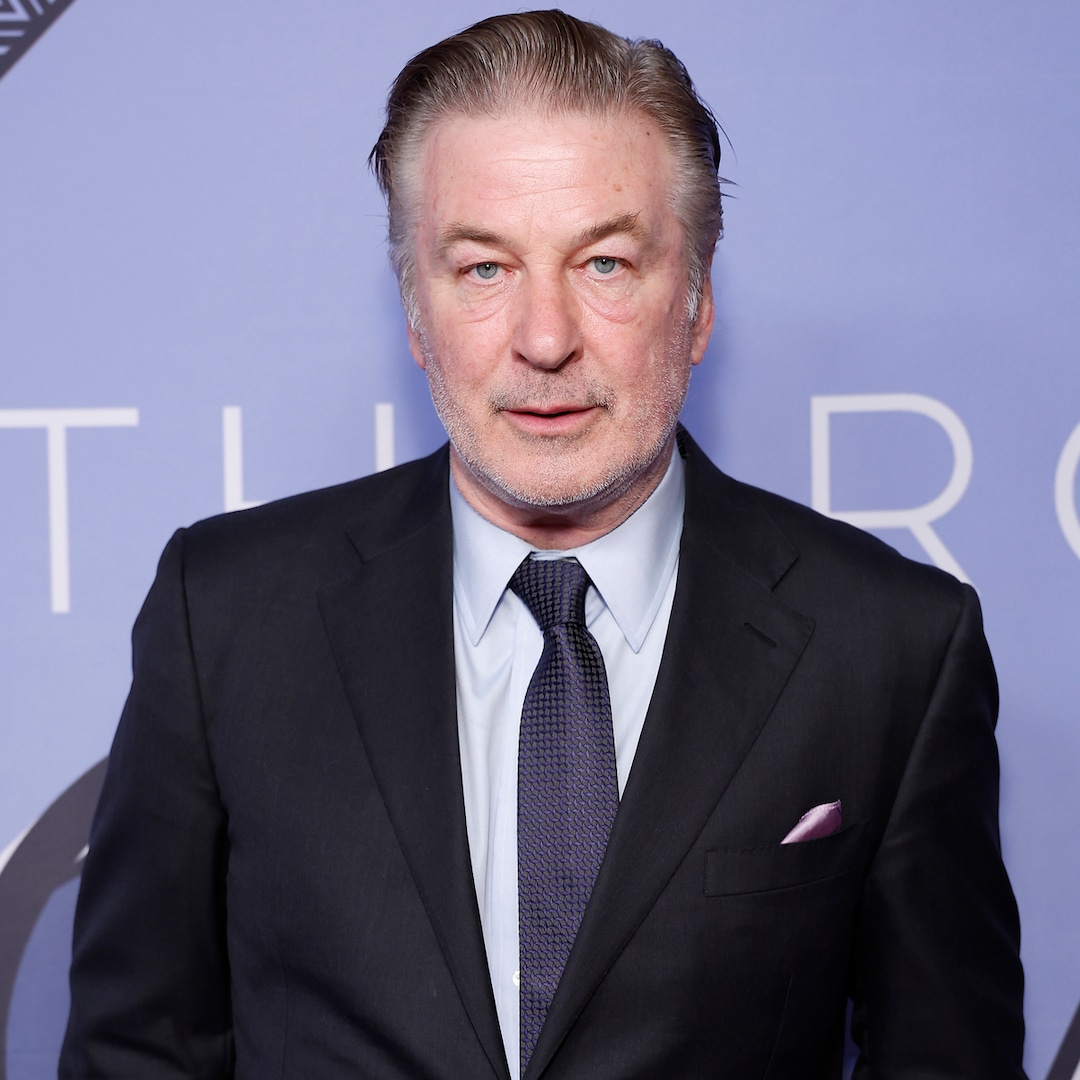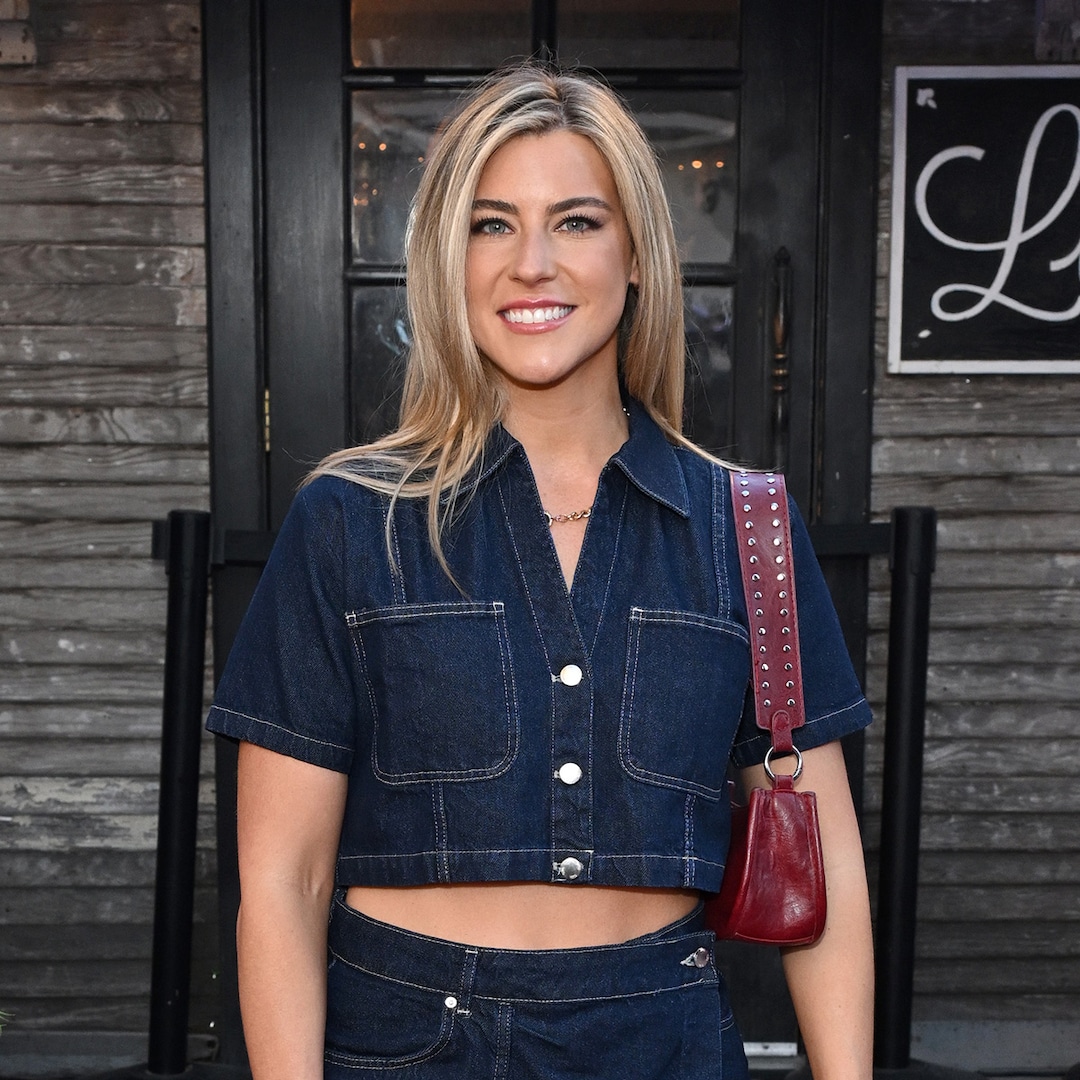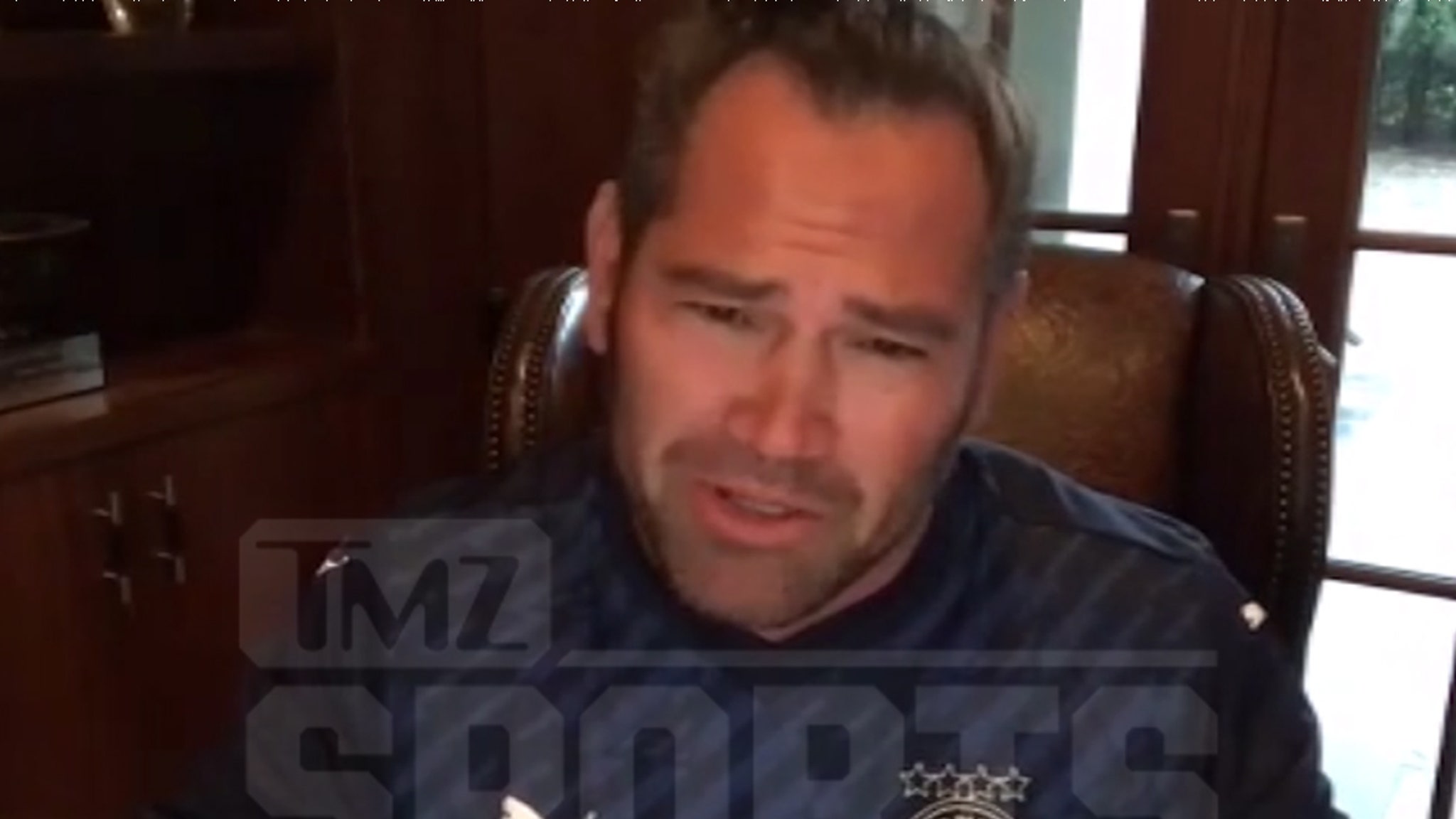Rust is moving forward with its release four years after a horrific on-set tragedy.
Nearly four years after Alec Baldwin mistakenly fired a loaded gun on the set of the Western movie, killing cinematographer Halyna Hutchins and injuring director Joel Souza, the first trailer for the movie has been shared with the public.
The film, which stars Baldwin as well as Patrick Scott McDermott, Josh Hopkins and Travis Fimmel, follows Harland Rust (Baldwin) in 1880s Kansas as he breaks his grandson (McDermott) out of jail. Rust and his grandson—who was set to be hanged after mistakenly killing a rancher—become fugitives in Mexico, as they attempt to outrun a U.S. Marshal (Hopkins) and bounty hunter (Fimmel) after them.
In the trailer, Baldwin appears with a full beard and puts on a Western accent, telling McDermott in one scene in front of a campfire, “Some things in life you can’t get back, I reckon.”
And while some fans expressed gratitude that the film is going forward with its release—one commenter on YouTube wrote, “Releasing the film is a way to honor Hutchins, the film looks solid.”—members of the production previously emphasized the difficulty in finishing the film.
Indeed, Souza previously told Vanity Fair he thought he was entirely done with filmmaking in the shooting’s aftermath, but returned for the sake of his late colleague.
“I knew that the movie being finished would financially benefit Halyna’s family, which is very important to me,” he added. “And I know this can sound trite for people who aren’t creative, but her last work matters. People seeing her last work matters. That was the tipping point for me in the decision.”
In a 2022 settlement with the production, Halyna’s widower Matt Hutchins was made an executive producer of the film, while Baldwin waived his fee to complete the film, and gave the amount he was already paid back to the production budget, he told Variety, dedicated to making sure Hutchins and his young son, Andros, “owned” the film.
However, Baldwin—whose involuntary manslaughter charges were dropped in July—has otherwise attempted to distance himself, his wife Hilaria Baldwin, and their seven kids from the aftermath. (Hannah Gutierrez-Reed, the armorer on the set, was found guilty of involuntary manslaughter in April 2024 and is currently serving an 18-month prison sentence.)
“This is obviously the most difficult thing I’ve ever dealt with in my life,” he told Variety in November of the Rust shooting, adding that he doesn’t plan to see the final cut. “Beyond the victims themselves, the thing that most pains me is what it did to my wife. My wife has been very, very traumatized from this. There has been a lot of pain.”
He added remorse that no one will ever be able to see the film in the way it was intended to be. As he put it, “It’s always going to be overshadowed by this.”
To revisit Alec’s Rust trial, keep reading…
Alec Baldwin’s Fateful Rehearsal Scene
Video of Alec Baldwin rehearsing the scene in which he drew his gun inside an old church on the film set at Bonanza Creek Ranch was played for the jury as opening statements got underway July 10.
“So whip it out?” he’s heard asking as he practices drawing the gun from behind his jacket three times.
Defense attorney Alex Spiro emphasized in his opening statement that his client is an actor, and that even if he did pull the trigger of the gun (which Baldwin has repeatedly denied doing), he wasn’t responsible for Halyna Hutchins‘ death.
“He did not know, or have any reason to know,” Spiro said, “that gun was loaded with a live bullet.”
911 Call Refers to Rust Assistant Director
Spiro played the 911 call made by a script supervisor on the set after Hutchins was shot at 1:46 p.m. on Oct. 21, 2021.
“This f—–g AD that yelled at me at lunch asking about revisions,” the caller said, “this motherf–ker… he’s responsible.”
First assistant director David Halls was sentenced to six months unsupervised probation in March 2023 after pleading no contest to a misdemeanor charge of negligent use of a deadly weapon.
Investigators determined that Halls and production armorer Hannah Gutierrez-Reed were the last people to handle the gun that discharged the fatal bullet before it was given to Baldwin.
Gutierrez was found guilty of involuntary manslaughter in March and sentenced to a maximum 18 months in jail, the same sentence Baldwin is facing if convicted.
Opening Statement Objections
The state raised several objections during Spiro’s opening, including after he said it was “part of the human condition, part of grief,” for people to want to make sense of a tragedy and seek justice.
“Justice is truth,” Spiro concluded his statement. “This is an unspeakable tragedy. Alec Baldwin committed no crime.”
Footage of Halyna Hutchins Shooting Aftermath
Testimony began July 10 with prosecution witness Nicholas LeFleur, a Santa Fe Police Department officer who was working for the sheriff’s office at the time and was first on the scene at Bonanza Creek Ranch after Hutchins was shot.
Over the defense’s strenuous objections during pre-trial motions, footage from LeFleur’s body cam was played for the jury, including fraught scenes of Hutchins being attended to after being shot. At first the crew is inside the church before she was moved into an ambulance for further treatment, as LeFleur explained on the stand, while they waited for a helicopter to arrive to airlift her to the hospital.
The Set Was Treated Like a Crime Scene
LeFleur testified that he went to his vehicle to get crime scene tape to secure the perimeter (as seen in the body-cam footage) but couldn’t remember if he was asked to or if it was just instinctual.
“I knew we needed to start one,” he said.
Baldwin, seen in the footage smoking a cigarette, was not separated from the rest of the witnesses before authorities took his statement, LeFleur said, but “I did tell him to stop talking.”
On cross-examination, LeFleur testified that he did not know, when he put the tape up, whether a crime had been committed or an accident had occurred.
Alec Baldwin’s Behavior After the Shooting Under Scrutiny
LeFleur acknowledged under cross-examination that, while he testified for the prosecution that he told Baldwin not to speak with fellow witnesses, he did not approach or otherwise re-instruct the actor to stop talking to others. The officer also said yes when Spiro asked if, more often than not, people were going up to Baldwin to speak with him.
Moreover, Spiro contended, there were eventually numerous police cruisers on set and Baldwin could have been asked to sit in any one of them, separate from the others, but no officer had him do so. LeFleur agreed with that assessment.
Live Rounds Found With Blanks on Rust Set
Investigators found live bullets along with so-called dead ones when they searched the Rust set following the shooting, Santa Fe Sherriff’s Office crime scene technician Marissa Poppell testified July 11.
There were live rounds in the prop cart, inside a munition box and in gun holsters for two actors, she acknowledged during Spiro’s cross-examination. Image shown in court showed that the live ammo had a silver dot at the bottom, while the dummies were more golden or bronze.
“Your working theory, as you evaluated the ammunition and looked at the similarity between the Starline nickel live and the Starline nickel dummies is that they could have been easily commingled there?” Spiro asked.
She said yes. Added Spiro? “In other words, somebody could have mistaken one for the other, right?”
Poppell replied, “Yes.”
According to her July 10 testimony, Poppell was the one who collected Baldwin’s shoulder holster from the church after the shooting and it held one live round of ammunition.
Alec Baldwin Told Wife Hilaria to Come to New Mexico After the Shooting
Hearing motions during the jury’s lunch break, First Judicial District Judge Mary Marlowe Sommer allowed prosecutors to introduce into evidence a portion of a phone call Baldwin made to wife Hilaria Baldwin from the police station after Hutchins was shot—in which he encouraged her to visit him in New Mexico, saying they’d “have fun.”
Baldwin didn’t know Hutchins had died when he made the call, but knew she was seriously injured, special prosecutor Kari Morrissey asserted in court.
“If the defense hasn’t spent all of this time saying how…panicked and upset he was,” Morrissey said, “I’m not sure that it would be relevant, but he is actually planning basically a vacation.”
The judge told Baldwin’s lawyers, who objected on several points, “I do find that it’s relevant to basically respond to you all talking about how upset Mr Baldwin was, and certainly you considered that fact of consequence.”
Crime Scene Tech Denies Burying Evidence
Under Spiro’s cross, Poppell denied withholding evidence by not adding a box of bullets she was given by a “good Samaritan” after Gutierrez’s trial to the overall Rust-related evidence, or by not showing it to the defense. She said she never gave any evidence to the defense.
Morrissey identified the person who gave Poppell the munitions as a friend of Gutierrez’s father, veteran Hollywood armorer Thell Reed. The prosecutor insinutated the man was looking to implicate Seth Kenney, the Rust weapon supplier, in bringing live rounds to the set.
Poppell said during redirect that she had no evidence that Kenney had brought the live rounds to set, but she did have evidence that Gutierrez did.
Gutierrez’s attorney Jason Bowles told NBC News it was “beyond shocking” that the bullets in question weren’t tested to see if they were the same kind as others found on the Rust set.
“They were hiding the ball until called out on it in trial,” Bowles said. “If you want to get to the truth, you run down all leads.”
The Jury Is Unexpectedly Excused for the Day After Defense Files Expedited Motion to Dismiss
The jury had only been seated for a brief time on the morning of July 12 when Judge Sommer sent them home for the day in the wake of the defense’s motion accusing the state of burying evidence.
Poppell testified to receiving a box of ammunition from former Arizona police officer Troy Teske—a friend of Gutierrez’s father previously identified as a “good Samaritan” but since identified in court—after Gutierrez was convicted of involuntary manslaughter in March for her role in Hutchins’ death.
Spiro previously questioned Poppell about why did she didn’t put the box with the rest of the Rust case evidence.
This morning, before the jury was brought in, Poppell again denied intentionally hiding anything, telling Spiro she was instructed to file the box under another case number, so she did.
The defense’s motion alleges the Santa Fe County Sheriff’s Office and the state “concealed from Baldwin that there was evidence that the live round came from Seth Kenney.”
After a lunch break, the prosecution called PDQ Props owner Kenney, who was hired to provide the Rust production with prop firearms and dummy rounds, to testify without the jury present as part of a hearing on the defense’s motion.
Kenney testified that, having supplied more than a thousand productions with dummy rounds, “there was never a question” in his mind as to whether he could have brought the live rounds to set.
Morrissey called the defense’s attempt to blame Kenney “a wild goose chase.”
Special Prosecutor Kari Morrissey Takes the Stand
Morrissey willingly agreed to take the witness stand to explain her role—or lack thereof, as she attested—in the box of ammunition delivered by Teske not being included in the Rust case evidence.
She testified that Gutierrez’s attorney Jason Bowles was aware that Teske wanted to give him the ammunition in question and that, once Bowles showed her a photo of the rounds in question, to her they looked “dissimilar” to the live rounds found on the Rust set.
Morrissey said Bowles informed Teske he wouldn’t be calling him as a witness. She also said that, once Teske brought the rounds to the Santa Fe County Sherrif’s Office, then-Det. (now Cpl.) Alexandra Hancock told her they’d be put into evidence.
Morrissey testified she had “no idea” it wouldn’t be filed under the Rust case number.
The rounds Teske handed over “would not have hurt the state’s case,” Morrissey said. “It would have been the best evidence I could have hoped for.”
Case Dismissed!
Judge Sommer dismissed the case against Baldwin with prejudice, meaning the charge cannot be refiled.
Agreeing with the defense that the state did not disclose possibly consequential evidence, the judge said, “The sanction of dismissal is the only warranted remedy.”
Baldwin teared up immediately as it became clear how Sommer was about to rule, as did Hilaria. She attended every day of the trial, along with her brother-in-law Stephen Baldwin.





